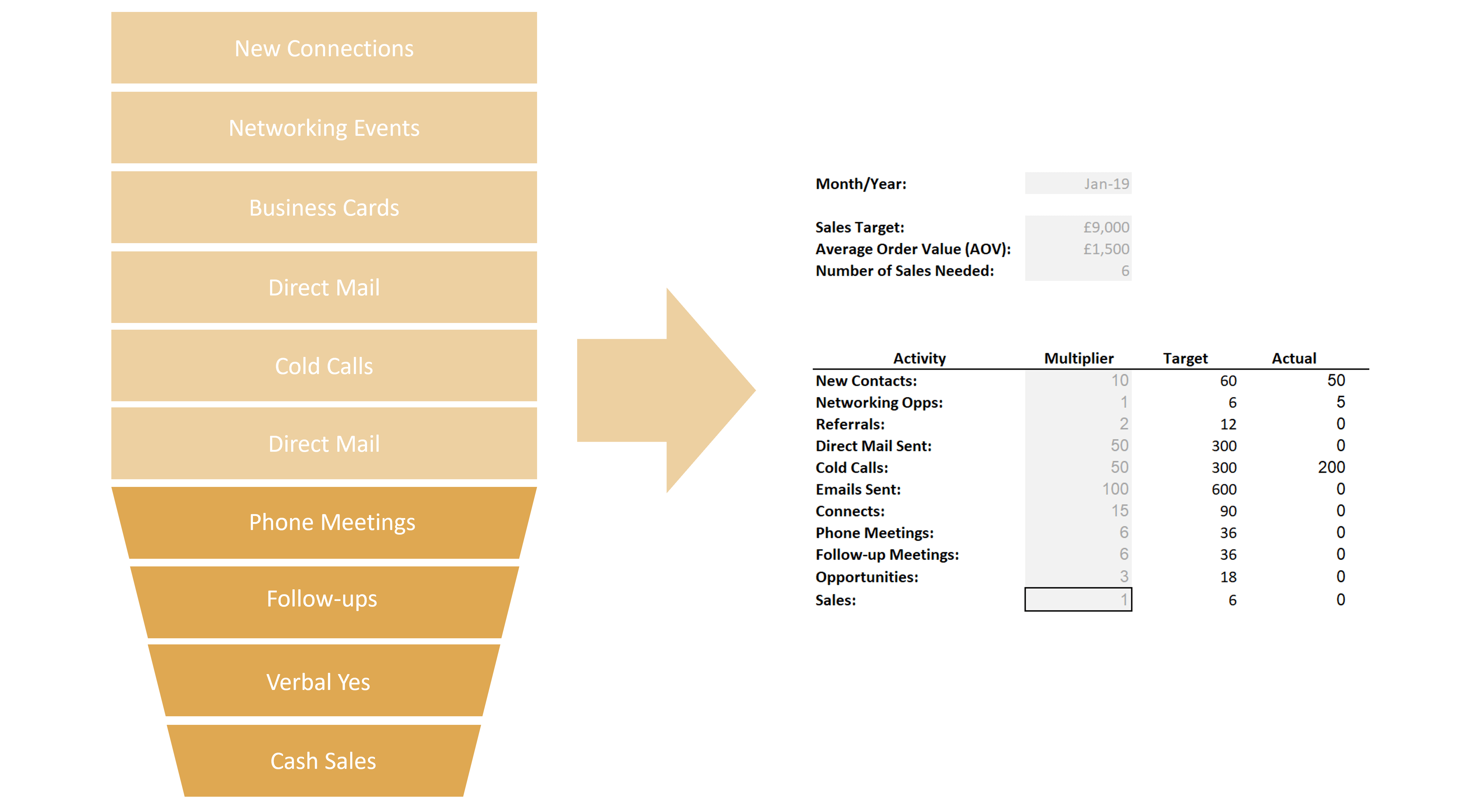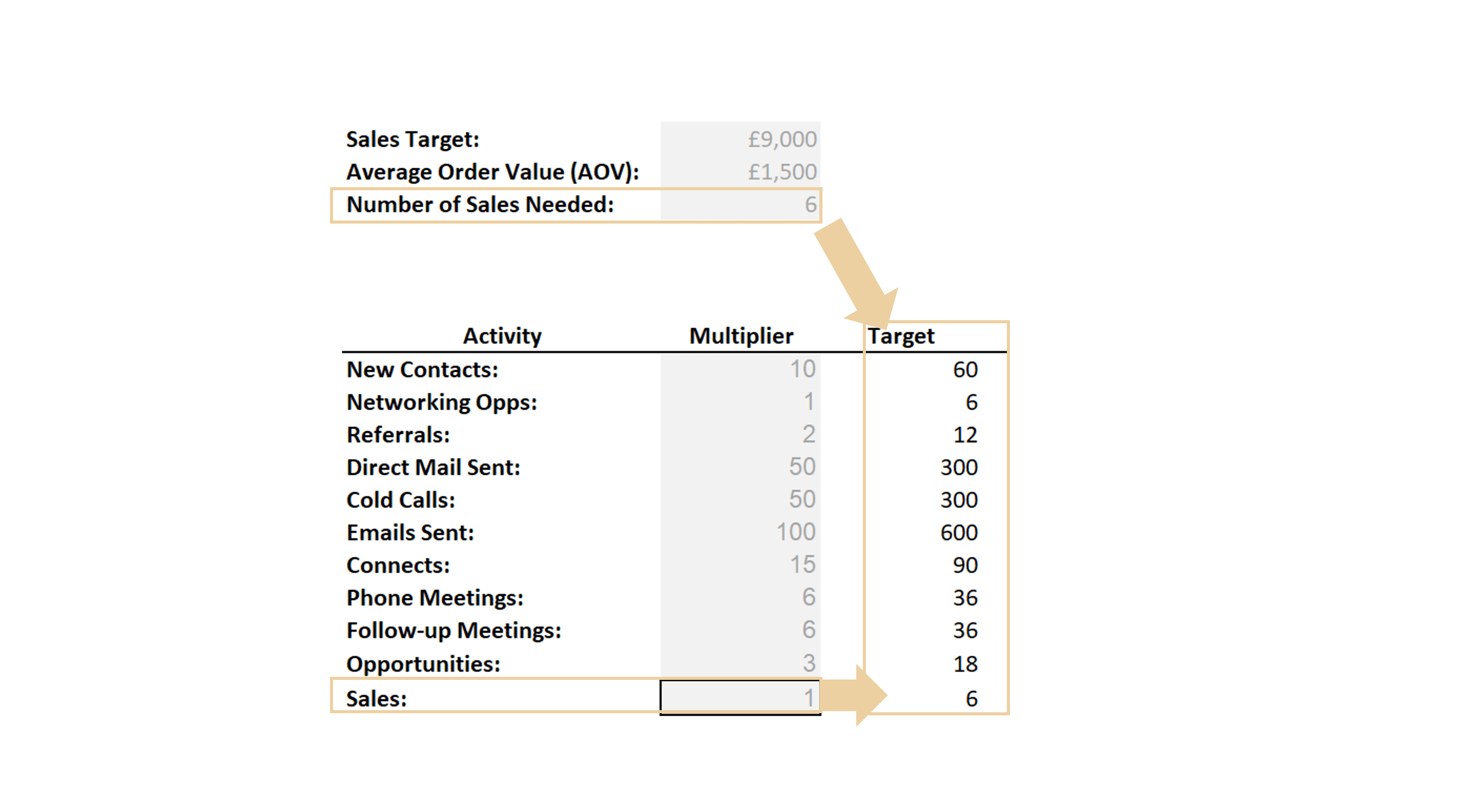Your Nuclear Weapon Against Wasting Time
Bottom line – if you’re not making money, you’re losing it.
That mantra holds true whether you’re bootstrapping to get your first $1,000 or whether you’re managing a seven-figure marketing and sales budget.
Sales and marketing come down to revenue: how much money is coming into your business, how you’re managing your sales pipeline, and even how you’re converting your prospect’s “Yes” into cold hard cash.
These are your “top-line activities” – the part of your company’s profit and loss statement that details revenue and selling costs (costs that go up with every subsequent sale).
At this point we’re going to focus on the sales side of the top-line, marketing we’ll cover at a later point, though the two are obviously connected and the latter will get a few honourable mentions moving forward.
Tracking Your Activity
So, we’ve already established, if you’re not making money you’re losing it, sales is important etc etc., but nothing happens in a silo…
… to make sales you need to have conversations,
… to have conversations you need to prospect,
… to prospect you need to reach out to relevant leads… and so forth.
All these activities (top-line) need to be tracked, but first you will need to break-down the different activities you undertake that ultimately lead to conversations, and then, finally, sales.

The Sales Formula
So, with our activities identified, now we can start tracking our numbers..
… How many events did we go to/business cards collected
… How many follow-ups did we make
… How many warm prospects did we reach out to
Etc etc… and ultimately… How many sales did we make (both verbal and settled invoices)
Once we have a baseline set of data, let’s say a month’s worth of activity, we can start making some inferences and adjustments:
Our Sales Formula will become obvious.
We will know exactly what actions we need to take, in order to make one sale.

Sales Targets
With a formula quantified, through our baseline figures, setting targets is fairly straightforward, we can simply work backwards from the sales data and the product/service’s price and quantify a sales goal

If you want to be profit driven, simply swap out the sales price for the profit per sale and work out the number of required sales that way.
Because our formula remains the same for forecasting purposes, all we do is adjust each stage of the formula to get our required level of input activity
Tracking this data against the actual activity will also act as a form of accountability: if you need to get 50 business cards = 15 meetings = 3 sales; and you’re only at 30 business cards at the end of the month, you know you’re slipping in your focus (focusing on activities that don’t lead to sales).
Rebalancing
As useful as the activity tracking process is, it isn’t perfect – there may be times that despite hitting your targets, you don’t make the expected number of sales.
Therefore, it is important to constantly update your formula.
However, the inference could be made that if you are consistently hitting your input targets, and if these targets are not materialising into sales, that perhaps a given stage of your top line activity is not as effective as it had previously been:
… perhaps your prospects’ quality has gone down (implement better vetting procedures)
… perhaps you’re not closing as many prospects (does the price need to be revisited, relative to the value of each prospect)
Final Thoughts
Data is your friend, so use it!
Allow the activity tracking process keep you accountable to your sales activity target and allow it to help you focus on key activities within your business.
